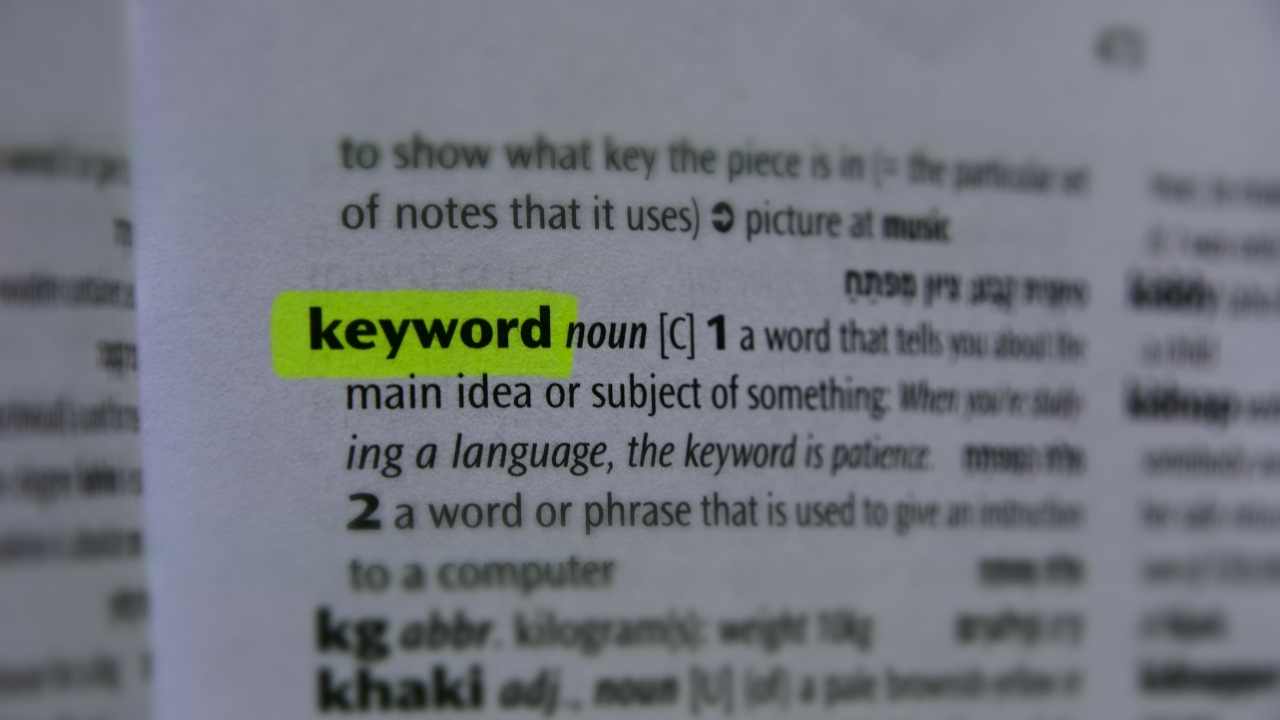SEO Keyword Strategies
Top 5 Techniques for Analyzing Historical Search Data

Looking at old search data helps me plan better SEO strategies. Here are five effective ways to look at search trends, which help me stay ahead of the competition. By carefully analyzing this data, you can use what’s worked in the past to do better in future search rankings.
- Identify Patterns: Look for consistent increases or decreases in search volume over time. This shows what people are more or less interested in and can guide your content creation.
- Seasonal Trends: Pay attention to searches that go up or down at certain times of the year. For example, if you’re selling sunscreen, you’d expect to see more searches in the summer months.
- Keyword Growth: Track which specific terms are becoming more popular. This can help you target emerging topics before your rivals do.
- Historical Peaks: Notice when certain searches had a lot of activity. Understanding why these peaks happened can help you predict and prepare for future trends.
- Competitor Analysis: See what keywords your competitors have previously succeeded with. This can give you ideas for your strategy.
Using these methods, you can make a plan using proven tactics to improve your visibility in search results.
Understanding Historical Search Volume
I will start by looking closely at past search trends to figure out what’s been catching people’s interest over time and why. I do this by gathering lots of data, ensuring it’s accurate and ready for a good look.
I then go through the data to spot when there have been lots of searches (peaks), fewer searches (troughs), and times when it’s stayed the same (plateaus). These ups and downs can show us how public interest or what people know about has changed.
It’s important to be very careful during this process to catch any odd or unusual data that might make the results misleading. I’ll map out the data over days, months, and years to see the gentle rise and fall of what people are curious about online.
By doing this careful work first, we can understand the spirit of the times as shown in what people search for. This sets us up to dig deeper into the patterns and trends.

Let’s now get into the details of spotting these patterns and trends.
Identifying Patterns and Trends
To spot patterns and trends in what people have been searching for, I look carefully at how often and in what context people search for certain words over time. Doing this helps me see if some topics are becoming more or less popular, indicating changes in what people are interested in or the business world. For example, I watch for more people searching for ‘swimwear’ when summer is coming, which helps me guess what they’ll want in the future. By understanding these patterns, I can predict what might happen next. This makes planning strategies based on solid evidence, not just guesses.
Next, I’ll take a closer look at how well different keywords have done over time. This is important because it shows me not just the big-picture trends but also gives me a detailed understanding of which specific terms are working well and which aren’t.
Assessing Keyword Performance Over Time
Looking closely at how keywords perform over time helps me make smarter choices. I see which keywords grab people’s attention and which are losing steam. I closely monitor how often people search for these terms, how rankings shift, and how often they click on them. This careful tracking helps me spot unusual changes, understand lasting patterns, and predict what might happen next.
When I study how keywords become more or less popular, I get a better picture of what the market is doing and what people are interested in. I’m not just copying what everyone else is doing. I’m trying to guess where they’ll head in the future. My goal is to make sure my content connects with what the audience wants to know and does so in a way that’s easy to find and interesting to read.
Now that I’ve got a record of how keywords have done over time, I can dig into the data to uncover valuable insights for my strategy.
For example, suppose I notice that the search volume for ‘sustainable travel options’ has steadily increased over the past year. In that case, I might create more content around eco-friendly travel tips, recommending products like biodegradable sunscreen or eco-friendly luggage. This shows that I’m not just looking at the data; I’m using it to offer useful information and suggestions that align with my current interests.

Interpreting Data for Strategic Insights
I’ve looked at past search data and found five effective ways to gain strategic insights that help me create better content. This process is organized; I study the changes and unusual patterns in the data to understand how and why people’s search habits change.
For example, if I see a spike in searches for ‘home office setups’ during a market event like a tech fair, I realize people might be looking for ways to improve their work-from-home experience because of the latest tech showcased there.
I also break down the data into smaller, specific areas to spot special chances to create content. This detailed view lets me focus my content on very specific interests that may not have much information available. It’s like going through a lot of data to find valuable insights and then using that information to make content that hits the mark with my audience as their interests change.
For instance, if I see a growing interest in eco-friendly products, I can create guides on the best sustainable brands to buy from. This provides my audience with the information they’re searching for and helps businesses that offer these eco-friendly products to get noticed.
Integrating Historical Data Into SEO Strategy
I regularly look at old search data to boost my website’s visibility and meet my audience’s changing needs. This includes checking which keywords brought people to my site and how high my pages ranked in search results. By doing this, I learn what topics and types of content my audience likes. It’s a smart way to figure out what to keep doing and what to change, so I’m not just guessing.
For example, if I notice that many people came to my site when I wrote about ‘best outdoor running shoes,’ I’ll keep using that keyword in my future posts and maybe even write a detailed guide on choosing running shoes.
I also watch for new trends in what people are searching for. This helps me update my list of keywords to be one of the first to answer new questions my audience might have. By looking at how many people click on my links and how quickly they leave my site, I can make my content and my website easier to use, making people want to stay longer.

In short, every piece of data helps me tweak my strategy to stay relevant and engaging for my visitors. This means my website is always evolving to match what people want to know and do online.
Frequently Asked Questions
How Can Historical Search Data Impact Future Content Marketing Strategies?
I can spot what topics and ideas are becoming more popular by analyzing past search data. This helps me create content that people are actually interested in. When I write about these hot topics, it’s easier for readers to find information that matters because it’s designed to match what they’re looking for as their tastes change. This approach is crucial because it keeps my content fresh and relevant, which audiences want. For example, if historical data shows an increasing interest in sustainable living, I might focus on creating detailed guides on eco-friendly products and tips for reducing waste. This way, I’m not just guessing what the audience cares about; I’m using real data to make smart choices.
What Are the Ethical Considerations When Using Historical Search Data for Targeting Specific Demographics?
When using historical search data to target specific groups of people, there are important ethical issues to consider.
I’m facing tough ethical questions about using people’s past online searches to figure out who to advertise to. This involves being careful not to invade someone’s privacy or unfairly single out a group of people. For instance, if I use search data showing an interest in maternity products to target ads, I must ensure I’m not assuming that all women of a certain age range are interested in these products, as this could be discriminatory. It’s crucial to balance being respectful to individuals and making smart marketing choices.
How Can Small Businesses Without Extensive Historical Data Compete With Larger Companies in SEO?
Small businesses can take several effective steps to hold their own against big companies in the competitive world of search engine optimization (SEO). By focusing on specific, less-competitive keywords that are highly relevant to their niche, small businesses can attract targeted traffic that’s more likely to convert into customers. Producing high-quality content that captivates and provides real value to readers is also crucial. This helps with search rankings and encourages visitors to share the content, increasing its reach.

Additionally, small businesses should embrace social media to connect with potential customers and share their content widely. A robust social media strategy can increase traffic and improve SEO results. Moreover, establishing strong relationships with the local community can be a game-changer. This might include partnering with local influencers, participating in community events, or getting involved with local charities. These connections can lead to valuable backlinks and local citations, which are important in local SEO rankings.
Are Any Tools or Software Specializing in Predictive Analysis Based on Historical Search Data?
Certainly, there are specialized tools and software that can predict future trends using past search data. For instance, Google Analytics offers predictive metrics to help you anticipate what your customers might be interested in next. SEMrush and Ahrefs are powerful tools; they analyze past search data to predict what topics or keywords may become popular. This is crucial because it helps you better plan your search engine optimization (SEO) strategy. By knowing what’s likely to trend, you can create content that aligns with those trends, increasing your chances of being found online. These tools are essential for anyone looking to improve their website’s visibility and draw in more visitors.
How Does User Privacy Play a Role in the Collection and Analysis of Historical Search Data?
Protecting user privacy is very important when we collect and look at historical search data. We need to make sure we don’t gather too much information. This is because we want to respect people’s right to control their data and decide for themselves. Even though we might miss out on useful information, keeping user data private is more important. It’s like ensuring others don’t read someone’s diary; it’s a matter of respect and trust. When analyzing the data, we should only use what’s necessary to gain insights and help improve user experience without invading their personal space.

Hello there! I’m Louis Hill, the go-to guy for all things SEO and Keyword Research at Keyword Luv. My journey began at Ohio State, where I honed my skills in computer programming. But it’s the dynamic world of SEO and Online Marketing that truly captivates me. I’ve probably spent more hours ranking websites than most self-confessed computer nerds!
When I’m not immersed in the digital realm, you’ll find me pedaling through the countryside, embracing the freedom of cycling. Or perhaps, scribbling some not-so-great poetry, which I find oddly therapeutic. Travel is another passion, exploring new places and creating memories. And let’s not forget Duchess, my Golden Retriever. She might not be the typical retriever, but she’s perfect in her unique way!
Feel free to connect with me on Instagram or Facebook. Whether you’re curious about the latest trends in SEO, want to swap travel stories, or share a laugh over some bad poetry, I’m all ears. Let’s navigate this fascinating digital landscape together!







